Large aftershock hits northern Japan Excerpts:
The aftershock highlighted the vulnerability of Japan’s nuclear plants to further tremors. While Tokyo Electric Power Company (TEPCO) reported no change in the state of its crippled reactors at the Fukushima Daiichi plant, other nuclear facilities in northern Japan suffered power losses and were compelled to rely on emergency diesel generators.
..
Yesterday evening more than 450,000 households were still without power. The region’s nuclear plants were already offline, and the available electricity supply fell further after five conventional power plants automatically shut down when the aftershock occurred. The outages were compounded by damage to the power grid. Fires and gas leaks were reported in Sendai and other areas of Miyagi and Iwate prefectures.
TEPCO’s statement (Following the aftershock) simply means that it has observed no change to what the International Atomic Energy Agency (IAEA) continues to describe as a “very serious” situation. The TEPCO comment is doubly deceptive because the means for observing changes—the instrumentation that normally monitors the reactors—has been compromised by the impact of the March 11 earthquake and tsunami.
And:
Conditions at the Fukushima plant are anything but normal. The conventional cooling systems of three of the six nuclear reactors—units 1, 2 and 3—were put out of action on March 11, resulting in the heating up of the reactor cores. A meltdown was only prevented by continuously pumping salt water, subsequently replaced by fresh water, into the reactors. Hydrogen explosions have badly damaged the reactor buildings of units 1 and 3 as well as unit 4, where the reactor core had been placed in the spent fuel rod pool to allow for reactor maintenance.
At this stage, the extent of the damage to the reactor cores can only be estimated, as no direct observation is possible. Nor is the state of the reactor cooling systems known, as deposits of salt are likely to be impeding water circulation. The danger of further hydrogen explosions was underscored by TEPCO’s decision this week to start pumping inert nitrogen into unit 2 to flush out hydrogen and oxygen from the primary containment vessel.
And:
Thursday’s tremor and associated power blackouts impacted on three other nuclear facilities in northern Japan. A fuel reprocessing plant at Rokkasho and a power plant at Higashidori, both in the Aomori Prefecture, were temporarily cut off from the electricity grid and had to rely on backup emergency diesel generators.
Radioactive ocean water sparks worry From Asia One. Excerpts:
Beijing on Friday expressed its concern over Japan's massive dumping of radioactive water into the Pacific Ocean from a quake-crippled nuclear plant.
"Being Japan's neighbour, it is natural for us to express concern about this," Foreign Ministry spokesman Hong Lei said in a statement. "We hope the Japanese side acts in accordance with relevant international laws and takes effective measures to protect the ocean environment."
He noted that Japan has informed the Chinese side about its moves and China is closely following developments.
"At the same time, we are conducting a professional assessment and will continue to keep contact with the Japanese. We require Japan to report comprehensive and accurate information in a timely fashion," Hong said.
I'm sure he's serious.
From Safe Distance, U.S.-Japanese Team Draws Up Plan to Demolish Reactors
Hydrogen explosions. High levels of radiation. Thousands of gallons of contaminated water dumped into the sea. With the drumbeat of bad news, including another powerful aftershock on Thursday, it will take months, if not years, to stabilize the reactors and spent fuel pools that were damaged in last month’s earthquake and tsunami at the Fukushima Daiichi plant.
Yet it is not too soon for a team of engineers from Japan and the United States to begin working on the thorny task of how to dismantle the reactors, four of which are so badly damaged that the plant’s operator has said they will be scrapped.
Already, dozens of engineers from Toshiba, which helped build four of the Fukushima Daiichi reactors, have been joined by experts from the United States to prepare for the decommissioning work, a job so big that the planning needs to start even now, in parallel with the efforts to contain the crisis.
IAEA chief says Japan's crisis extremely serious
The International Atomic Energy Agency chief says he views Japan's nuclear crisis as an extremely serious accident requiring international cooperation.
Thursday's quake damages Onagawa nuclear plant Understand, this is ANOTHER nuclear power plant. From NHK. Plus video.
Tohoku Electric Power Company says Thursday night's strong earthquake caused water to overflow from spent fuel storage pools at one of its nuclear power plants.
The power company reported on Friday that water had spilled onto the floor at all 3 reactors at the Onagawa nuclear power plant in Miyagi Prefecture. The amount of water spilled was 3.8 liters at the most.
Why isn't TEPCO doing simultaneous damage assessment? Why aren't they beginning to construct some contingency containment structures and systems? I know you don't do this overnight, but if the already-damaged containment structures go, Doom will most assuredly prevail.
Inside report from Fukushima nuclear reactor evacuation zone Video from Journalist Tetsuo Jimbo driving, then walking towards Fukushima. A sad and creepy trip into the recently created Zone of Ghosts, where the few people that remained were leaving, and the only ones left behind were the animals.
Water radiation levels rise north of nuke plant From NHK, via Rense. Excepts:
The operator of the troubled Fukushima Daiichi nuclear power plant says seawater radiation levels continue to rise in areas north of the plant.
Tokyo Electric Power Company says it detected on Thursday 110 becquerels of radioactive iodine-131 per cubic centimeter in seawater samples collected 30 meters from outlets in the northern part of the complex.
The figure is 2,800 times higher than the maximum allowed under government standards. Measurements at the same spot were 600 times the standard on Tuesday and 1,000 times on Wednesday.
The aftershock highlighted the vulnerability of Japan’s nuclear plants to further tremors. While Tokyo Electric Power Company (TEPCO) reported no change in the state of its crippled reactors at the Fukushima Daiichi plant, other nuclear facilities in northern Japan suffered power losses and were compelled to rely on emergency diesel generators.
..
Yesterday evening more than 450,000 households were still without power. The region’s nuclear plants were already offline, and the available electricity supply fell further after five conventional power plants automatically shut down when the aftershock occurred. The outages were compounded by damage to the power grid. Fires and gas leaks were reported in Sendai and other areas of Miyagi and Iwate prefectures.
TEPCO’s statement (Following the aftershock) simply means that it has observed no change to what the International Atomic Energy Agency (IAEA) continues to describe as a “very serious” situation. The TEPCO comment is doubly deceptive because the means for observing changes—the instrumentation that normally monitors the reactors—has been compromised by the impact of the March 11 earthquake and tsunami.
And:
Conditions at the Fukushima plant are anything but normal. The conventional cooling systems of three of the six nuclear reactors—units 1, 2 and 3—were put out of action on March 11, resulting in the heating up of the reactor cores. A meltdown was only prevented by continuously pumping salt water, subsequently replaced by fresh water, into the reactors. Hydrogen explosions have badly damaged the reactor buildings of units 1 and 3 as well as unit 4, where the reactor core had been placed in the spent fuel rod pool to allow for reactor maintenance.
At this stage, the extent of the damage to the reactor cores can only be estimated, as no direct observation is possible. Nor is the state of the reactor cooling systems known, as deposits of salt are likely to be impeding water circulation. The danger of further hydrogen explosions was underscored by TEPCO’s decision this week to start pumping inert nitrogen into unit 2 to flush out hydrogen and oxygen from the primary containment vessel.
And:
Thursday’s tremor and associated power blackouts impacted on three other nuclear facilities in northern Japan. A fuel reprocessing plant at Rokkasho and a power plant at Higashidori, both in the Aomori Prefecture, were temporarily cut off from the electricity grid and had to rely on backup emergency diesel generators.
Radioactive ocean water sparks worry From Asia One. Excerpts:
Beijing on Friday expressed its concern over Japan's massive dumping of radioactive water into the Pacific Ocean from a quake-crippled nuclear plant.
"Being Japan's neighbour, it is natural for us to express concern about this," Foreign Ministry spokesman Hong Lei said in a statement. "We hope the Japanese side acts in accordance with relevant international laws and takes effective measures to protect the ocean environment."
He noted that Japan has informed the Chinese side about its moves and China is closely following developments.
"At the same time, we are conducting a professional assessment and will continue to keep contact with the Japanese. We require Japan to report comprehensive and accurate information in a timely fashion," Hong said.
I'm sure he's serious.
From Safe Distance, U.S.-Japanese Team Draws Up Plan to Demolish Reactors
Hydrogen explosions. High levels of radiation. Thousands of gallons of contaminated water dumped into the sea. With the drumbeat of bad news, including another powerful aftershock on Thursday, it will take months, if not years, to stabilize the reactors and spent fuel pools that were damaged in last month’s earthquake and tsunami at the Fukushima Daiichi plant.
Yet it is not too soon for a team of engineers from Japan and the United States to begin working on the thorny task of how to dismantle the reactors, four of which are so badly damaged that the plant’s operator has said they will be scrapped.
Already, dozens of engineers from Toshiba, which helped build four of the Fukushima Daiichi reactors, have been joined by experts from the United States to prepare for the decommissioning work, a job so big that the planning needs to start even now, in parallel with the efforts to contain the crisis.
IAEA chief says Japan's crisis extremely serious
The International Atomic Energy Agency chief says he views Japan's nuclear crisis as an extremely serious accident requiring international cooperation.
Thursday's quake damages Onagawa nuclear plant Understand, this is ANOTHER nuclear power plant. From NHK. Plus video.
Tohoku Electric Power Company says Thursday night's strong earthquake caused water to overflow from spent fuel storage pools at one of its nuclear power plants.
The power company reported on Friday that water had spilled onto the floor at all 3 reactors at the Onagawa nuclear power plant in Miyagi Prefecture. The amount of water spilled was 3.8 liters at the most.
Why isn't TEPCO doing simultaneous damage assessment? Why aren't they beginning to construct some contingency containment structures and systems? I know you don't do this overnight, but if the already-damaged containment structures go, Doom will most assuredly prevail.
Inside report from Fukushima nuclear reactor evacuation zone Video from Journalist Tetsuo Jimbo driving, then walking towards Fukushima. A sad and creepy trip into the recently created Zone of Ghosts, where the few people that remained were leaving, and the only ones left behind were the animals.
Water radiation levels rise north of nuke plant From NHK, via Rense. Excepts:
The operator of the troubled Fukushima Daiichi nuclear power plant says seawater radiation levels continue to rise in areas north of the plant.
Tokyo Electric Power Company says it detected on Thursday 110 becquerels of radioactive iodine-131 per cubic centimeter in seawater samples collected 30 meters from outlets in the northern part of the complex.
The figure is 2,800 times higher than the maximum allowed under government standards. Measurements at the same spot were 600 times the standard on Tuesday and 1,000 times on Wednesday.










































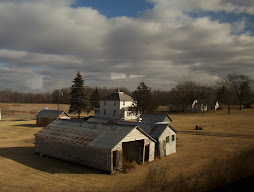











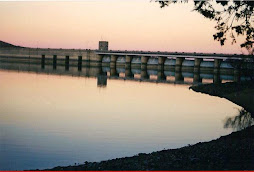







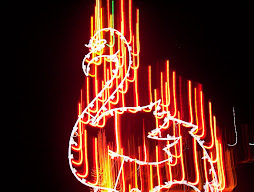




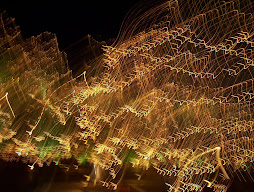













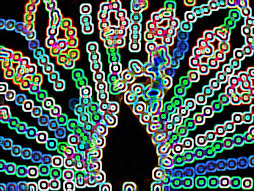









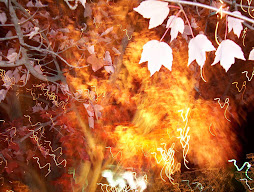













No comments:
Post a Comment